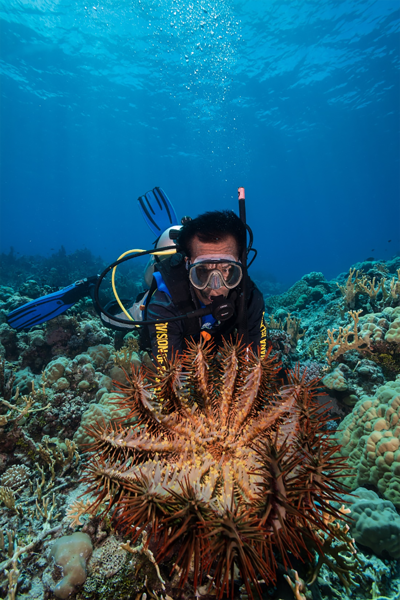Navy divers earlier this year removed nearly 200 crown of thorns sea stars found in the waters off Naval Base Guam, the Navy announced this week.
The divers worked with marine scientists from Naval Facilities Engineering Command Marianas on the project to identify and remove the damaging sea stars, which in large numbers can kill coral reefs.
The sea star, along with coral bleaching, are significant causes of coral loss in the region, according to the Navy.
More: Guam Coastal Management objected to Navy's training plans, Navy proceeded anyway
NAVFAC is part of a team, formed in 2017, including the government of Guam and non-governmental partners, to provide a rapid response to the environmental threat posed by the crown of thorns.
“We were informed by the (response team) that a large amount of (crown of thorns) were sighted at Old Wives Beach,” said Andres Reyes, NAVFAC Marianas marine scientist. “After hearing this and receiving support from (Naval Base Guam) leadership to have the dive locker respond, I coordinated with Senior Chief Navy Diver Corey Clifton and Navy Diver 1st Class Alexander Wright to have them conduct the culling.”
More: Navy enhances baseball field at Okkodo High School
Navy divers surveyed the waters near Old Wives Beach, heading toward Turtle Rock, and discovered extensive coral damage which suggested sea stars had moved through that area.
“Upon reaching the southern edge of the cove, they found significant numbers of very large (crown of thorns), removing a total of 191 individual sea stars,” the Navy stated.
According to the Navy, the sea stars, in small numbers, may enhance the health of reefs. But when they reproduce rapidly they can kill 90% of life on the reefs, the Navy stated. It stated the crown of thorns outbreaks may be caused by rising ocean temperatures or by algae in runoff.
This article originally appeared on Pacific Daily News: Navy finds, removes nearly 200 damaging sea stars






(0) comments
Welcome to the discussion.
Log In
Keep it Clean. Please avoid obscene, vulgar, lewd, racist or sexually-oriented language.
PLEASE TURN OFF YOUR CAPS LOCK.
Don't Threaten. Threats of harming another person will not be tolerated.
Be Truthful. Don't knowingly lie about anyone or anything.
Be Nice. No racism, sexism or any sort of -ism that is degrading to another person.
Be Proactive. Use the 'Report' link on each comment to let us know of abusive posts.
Share with Us. We'd love to hear eyewitness accounts, the history behind an article.